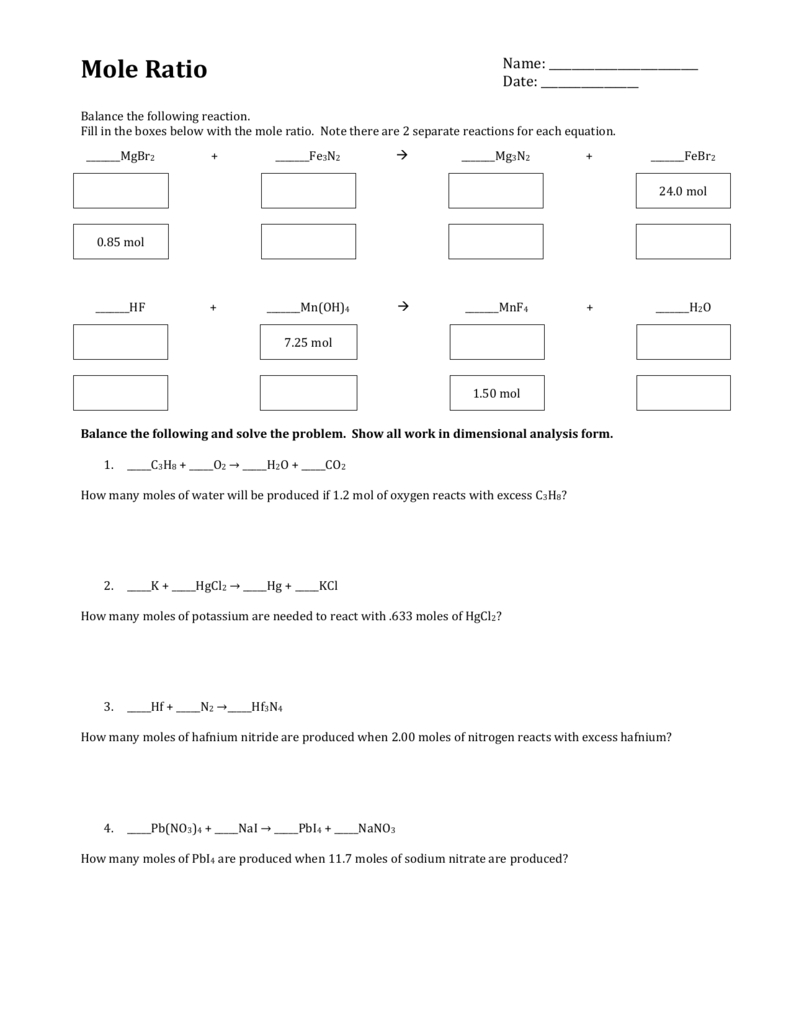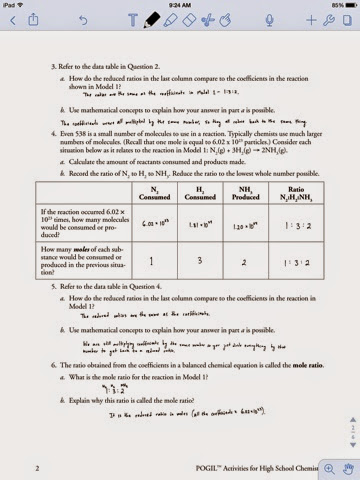
In this experiment, you will determine the concentration of acetic acid, HC 2H 3O 2 in commercial vinegar. The most common type of titration is the acid-base titration.

You will use mechanical stirring in this experiment.
#Chemlab 12 a mole ratio answers manual#
Either manual swirling of the beaker or mechanical stirring can be used. It is important to keep a titration well mixed, so the titrant and analyte can contact each other and react rapidly. Indicators are chosen so the endpoint is very close to the equivalence point. Since the color change is near but not exactly at the equivalence point, the point at which the color change occurs is called the endpoint. The indicator, which is a substance that changes color near the equivalence point, is added to the analyte solution. The equivalence point can also be determined visually with an indicator. The pH can be monitored during the titration with a pH electrode and the equivalence point identified as the point of most rapid pH change. For this first lab, you will need your titrations to agree to within 0.50 mL.įigure 1 : Titration Setup The equivalence point can be determined by two methods. With practice, one can dispense fractions of a drop of titrant and control the procedure well enough that replicated titrations agree within 0.10 mL. The delivery of the titrant is adjusted with the stopcock on the buret. Usually, the volume readings are estimated to the nearest 0.01 mL. This is called the equivalence point, at which the volume of titrant delivered by the buret is read. Titrant is added to the analyte until the stoichiometric volume of titrant has been added. A buret, which contains the titrant, is calibrated so the volume of solution that it delivers can be determined with high accuracy and precision. The experimental setup is shown in Figure 1. The concentration of the analyte is determined from the concentration and volume of titrant and the stoichiometry of the reaction between them. The stoichiometric volume of one reactant of known concentration, the titrant, that is required to react with another reactant of unknown concentration, the analyte, is measured. A titration is an analytical procedure in which a reaction is run under carefully controlled conditions. The very common and simple technique of titration is demonstrated in this experiment. Introduction Many laboratories analyze consumer products to determine accuracy in the labeling of the product.

4 To calculate the amount of analyte present from the result of a titration.


 0 kommentar(er)
0 kommentar(er)
